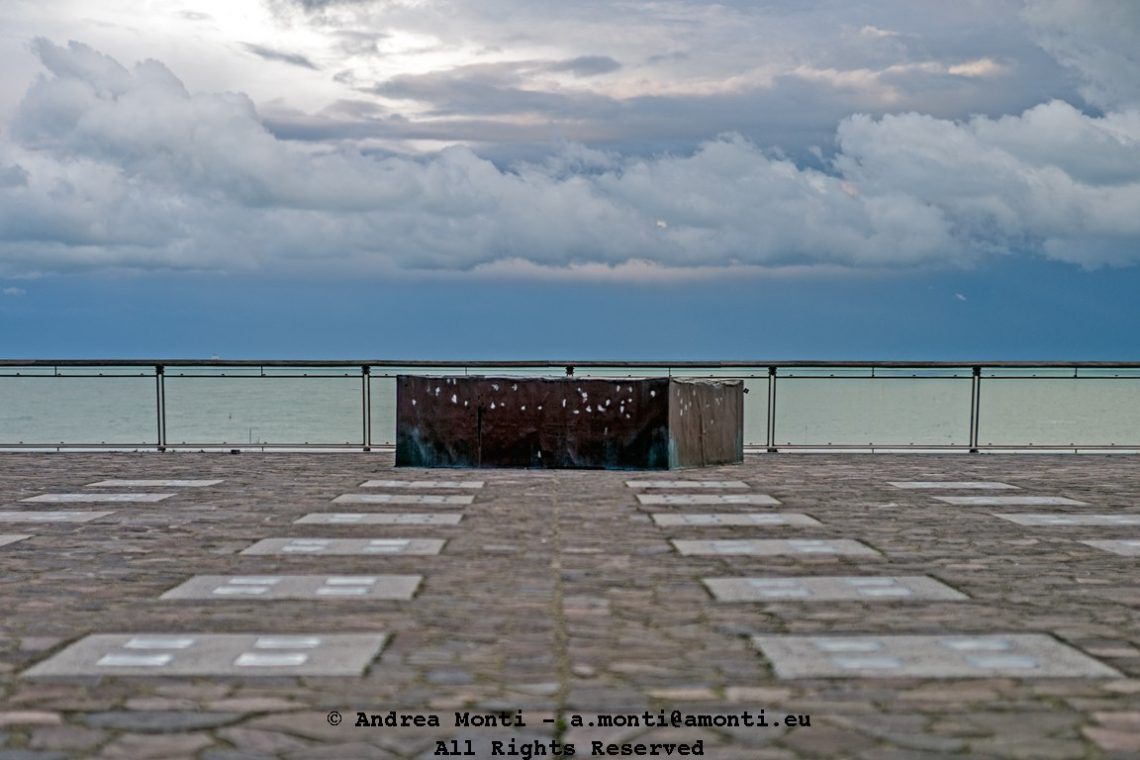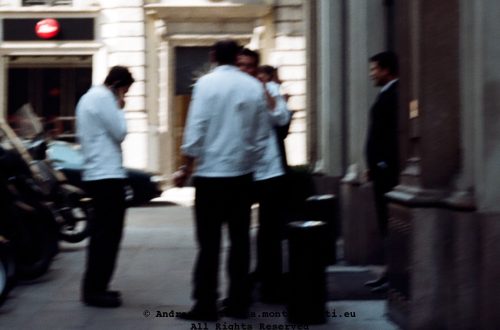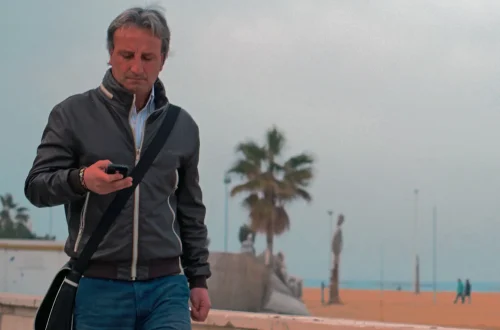
The Empty Stage
There’s a stillness in this image that’s almost unnerving — the kind of stillness you find after the audience has gone home, the performers have left, and the sea has reclaimed the soundscape. The photograph presents what looks like a small, weather-worn platform facing the horizon, its rusted surface marked by time and salt. In front of it, the patterned paving stones draw the eye directly forward, as though you’re being ushered to take your place before the infinite backdrop of sky and water.
Compositionally, the image is disciplined and symmetrical without feeling sterile. The vanishing lines of the pavement and the horizon are set dead-centre, pulling you into the heart of the frame. The glass balustrade forms a thin but definitive divide between the human-made space and the muted greens and blues of the sea beyond. The low angle works well here, giving weight to the foreground and lending the modest platform a sense of presence it might lack in person.
Technically, the exposure is well-judged for a scene that’s neither fully lit nor deeply shadowed. The sky retains detail in its layered clouds, the sea sits in gentle contrast beneath it, and there’s enough texture in the stones to keep the foreground alive without overpowering the image. The muted colour palette — slate grey, rust brown, pale teal — is part of what makes the atmosphere so effective.
It’s an “empty stage” in every sense: no performance, no audience, no clear narrative. And yet, it’s exactly that emptiness that invites you to imagine what could happen here — or perhaps to accept that nothing at all will.




